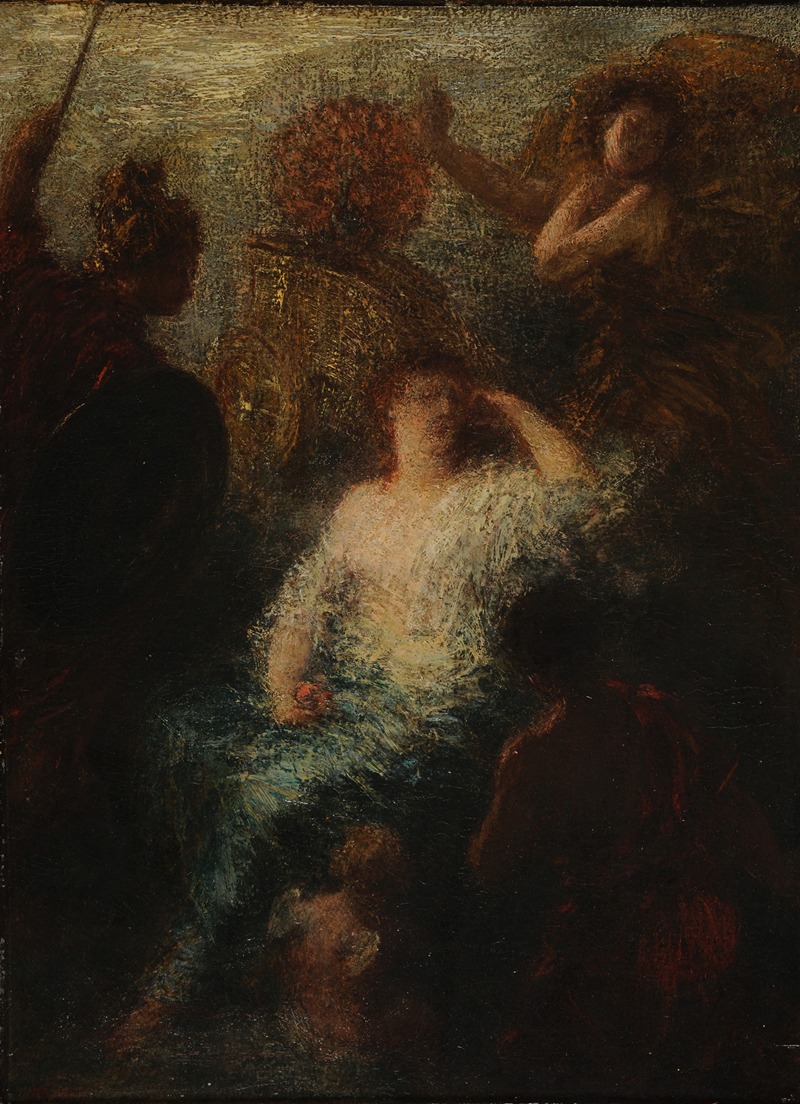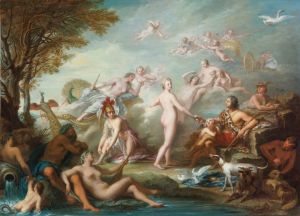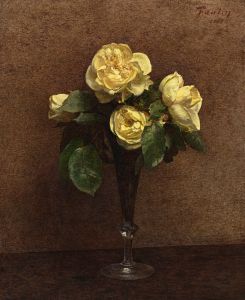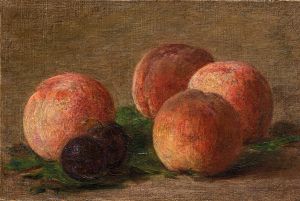
Le jugement de Pâris
A hand-painted replica of Henri Fantin-Latour’s masterpiece Le jugement de Pâris, meticulously crafted by professional artists to capture the true essence of the original. Each piece is created with museum-quality canvas and rare mineral pigments, carefully painted by experienced artists with delicate brushstrokes and rich, layered colors to perfectly recreate the texture of the original artwork. Unlike machine-printed reproductions, this hand-painted version brings the painting to life, infused with the artist’s emotions and skill in every stroke. Whether for personal collection or home decoration, it instantly elevates the artistic atmosphere of any space.
Henri Fantin-Latour's painting "Le Jugement de Pâris" is a notable work by the French artist, who is renowned for his still lifes and group portraits. Fantin-Latour, born in 1836 in Grenoble, France, was a painter who often drew inspiration from mythology, music, and literature, which is evident in this particular work.
"Le Jugement de Pâris" depicts the mythological story of the Judgment of Paris, a tale from Greek mythology that has been a popular subject in art for centuries. The story involves Paris, a prince of Troy, who is tasked with deciding which of three goddesses—Hera, Athena, or Aphrodite—is the fairest. Each goddess offers Paris a bribe: Hera promises power, Athena offers wisdom, and Aphrodite offers the love of the most beautiful mortal woman, Helen of Sparta. Paris ultimately awards the golden apple to Aphrodite, an action that leads to the events of the Trojan War.
Fantin-Latour's interpretation of this mythological event is characterized by his typical style, which often combines realism with a dreamlike quality. His use of light and shadow, as well as his attention to detail, brings a unique perspective to this well-known story. The painting captures the moment of decision, with Paris contemplating the three goddesses, each depicted with distinct attributes that symbolize their respective domains.
Fantin-Latour was part of the Symbolist movement, which sought to express ideas and emotions through symbolic imagery. This influence is evident in "Le Jugement de Pâris," as the painting goes beyond a simple retelling of the myth to explore themes of choice, beauty, and consequence. The artist's use of color and composition reflects the inner conflict and allure of the scene, inviting viewers to ponder the implications of Paris's decision.
Throughout his career, Fantin-Latour maintained a connection with the Impressionists, although he did not fully embrace their techniques. He was friends with artists such as Édouard Manet and was influenced by the works of Delacroix and Courbet. Despite this, Fantin-Latour's style remained distinct, characterized by a meticulous approach to form and a preference for subdued, harmonious colors.
"Le Jugement de Pâris" is one of many works by Fantin-Latour that draws on literary and mythological themes. His interest in music also played a significant role in his art, as he created several works inspired by composers such as Wagner and Berlioz. This interdisciplinary approach highlights Fantin-Latour's diverse interests and his ability to blend different art forms into his paintings.
The painting is part of Fantin-Latour's broader oeuvre, which includes not only mythological and literary subjects but also portraits and still lifes. His flower paintings, in particular, are celebrated for their delicate beauty and attention to detail, showcasing his skill in capturing the natural world.
Henri Fantin-Latour passed away in 1904, leaving behind a legacy of works that continue to be appreciated for their technical excellence and evocative themes. "Le Jugement de Pâris" remains a testament to his ability to interpret classical stories with a fresh perspective, combining traditional subject matter with his unique artistic vision.












